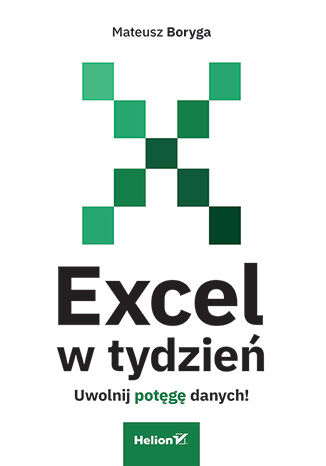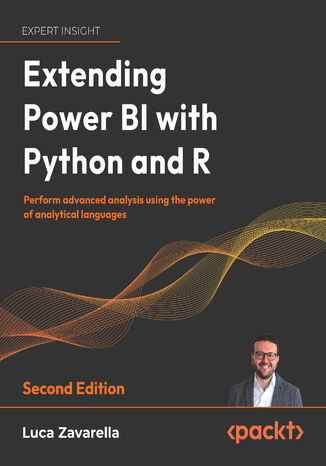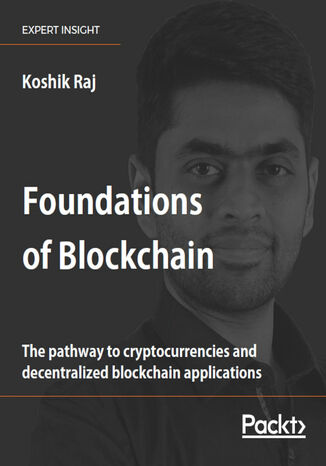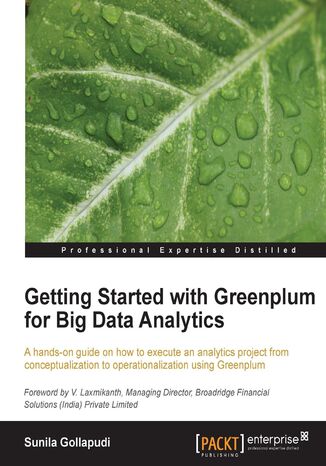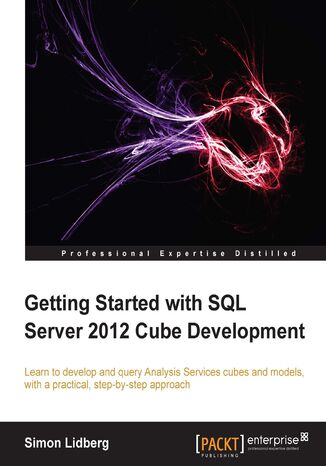Categories
Ebooks
-
Business and economy
- Bitcoin
- Businesswoman
- Coaching
- Controlling
- E-business
- Economy
- Finances
- Stocks and investments
- Personal competence
- Computer in the office
- Communication and negotiation
- Small company
- Marketing
- Motivation
- Multimedia trainings
- Real estate
- Persuasion and NLP
- Taxes
- Social policy
- Guides
- Presentations
- Leadership
- Public Relation
- Reports, analyses
- Secret
- Social Media
- Sales
- Start-up
- Your career
- Management
- Project management
- Human Resources
-
For children
-
For youth
-
Education
-
Encyclopedias, dictionaries
-
E-press
- Architektura i wnętrza
- Health and Safety
- Biznes i Ekonomia
- Home and garden
- E-business
- Ekonomia i finanse
- Esoterecism
- Finances
- Personal finance
- Business
- Photography
- Computer science
- HR & Payroll
- For women
- Computers, Excel
- Accounts
- Culture and literature
- Scientific and academic
- Environmental protection
- Opinion-forming
- Education
- Taxes
- Travelling
- Psychology
- Religion
- Agriculture
- Book and press market
- Transport and Spedition
- Healthand beauty
-
History
-
Computer science
- Office applications
- Data bases
- Bioinformatics
- IT business
- CAD/CAM
- Digital Lifestyle
- DTP
- Electronics
- Digital photography
- Computer graphics
- Games
- Hacking
- Hardware
- IT w ekonomii
- Scientific software package
- School textbooks
- Computer basics
- Programming
- Mobile programming
- Internet servers
- Computer networks
- Start-up
- Operational systems
- Artificial intelligence
- Technology for children
- Webmastering
-
Other
-
Foreign languages
-
Culture and art
-
School reading books
-
Literature
- Antology
- Ballade
- Biographies and autobiographies
- For adults
- Dramas
- Diaries, memoirs, letters
- Epic, epopee
- Essay
- Fantasy and science fiction
- Feuilletons
- Work of fiction
- Humour and satire
- Other
- Classical
- Crime fiction
- Non-fiction
- Fiction
- Mity i legendy
- Nobelists
- Novellas
- Moral
- Okultyzm i magia
- Short stories
- Memoirs
- Travelling
- Narrative poetry
- Poetry
- Politics
- Popular science
- Novel
- Historical novel
- Prose
- Adventure
- Journalism, publicism
- Reportage novels
- Romans i literatura obyczajowa
- Sensational
- Thriller, Horror
- Interviews and memoirs
-
Natural sciences
-
Social sciences
-
School textbooks
-
Popular science and academic
- Archeology
- Bibliotekoznawstwo
- Cinema studies
- Philology
- Polish philology
- Philosophy
- Finanse i bankowość
- Geography
- Economy
- Trade. World economy
- History and archeology
- History of art and architecture
- Cultural studies
- Linguistics
- Literary studies
- Logistics
- Maths
- Medicine
- Humanities
- Pedagogy
- Educational aids
- Popular science
- Other
- Psychology
- Sociology
- Theatre studies
- Theology
- Economic theories and teachings
- Transport i spedycja
- Physical education
- Zarządzanie i marketing
-
Guides
-
Game guides
-
Professional and specialist guides
-
Law
- Health and Safety
- History
- Road Code. Driving license
- Law studies
- Healthcare
- General. Compendium of knowledge
- Academic textbooks
- Other
- Construction and local law
- Civil law
- Financial law
- Economic law
- Economic and trade law
- Criminal law
- Criminal law. Criminal offenses. Criminology
- International law
- International law
- Health care law
- Educational law
- Tax law
- Labor and social security law
- Public, constitutional and administrative law
- Family and Guardianship Code
- agricultural law
- Social law, labour law
- European Union law
- Industry
- Agricultural and environmental
- Dictionaries and encyclopedia
- Public procurement
- Management
-
Tourist guides and travel
- Africa
- Albums
- Southern America
- North and Central America
- Australia, New Zealand, Oceania
- Austria
- Asia
- Balkans
- Middle East
- Bulgary
- China
- Croatia
- The Czech Republic
- Denmark
- Egipt
- Estonia
- Europe
- France
- Mountains
- Greece
- Spain
- Holand
- Iceland
- Lithuania
- Latvia
- Mapy, Plany miast, Atlasy
- Mini travel guides
- Germany
- Norway
- Active travelling
- Poland
- Portugal
- Other
- Przewodniki po hotelach i restauracjach
- Russia
- Romania
- Slovakia
- Slovenia
- Switzerland
- Sweden
- World
- Turkey
- Ukraine
- Hungary
- Great Britain
- Italy
-
Psychology
- Philosophy of life
- Kompetencje psychospołeczne
- Interpersonal communication
- Mindfulness
- General
- Persuasion and NLP
- Academic psychology
- Psychology of soul and mind
- Work psychology
- Relacje i związki
- Parenting and children psychology
- Problem solving
- Intellectual growth
- Secret
- Sexapeal
- Seduction
- Appearance and image
- Philosophy of life
-
Religion
-
Sport, fitness, diets
-
Technology and mechanics
Audiobooks
-
Business and economy
- Bitcoin
- Businesswoman
- Coaching
- Controlling
- E-business
- Economy
- Finances
- Stocks and investments
- Personal competence
- Communication and negotiation
- Small company
- Marketing
- Motivation
- Real estate
- Persuasion and NLP
- Taxes
- Social policy
- Guides
- Presentations
- Leadership
- Public Relation
- Secret
- Social Media
- Sales
- Start-up
- Your career
- Management
- Project management
- Human Resources
-
For children
-
For youth
-
Education
-
Encyclopedias, dictionaries
-
E-press
-
History
-
Computer science
-
Other
-
Foreign languages
-
Culture and art
-
School reading books
-
Literature
- Antology
- Ballade
- Biographies and autobiographies
- For adults
- Dramas
- Diaries, memoirs, letters
- Epic, epopee
- Essay
- Fantasy and science fiction
- Feuilletons
- Work of fiction
- Humour and satire
- Other
- Classical
- Crime fiction
- Non-fiction
- Fiction
- Mity i legendy
- Nobelists
- Novellas
- Moral
- Okultyzm i magia
- Short stories
- Memoirs
- Travelling
- Poetry
- Politics
- Popular science
- Novel
- Historical novel
- Prose
- Adventure
- Journalism, publicism
- Reportage novels
- Romans i literatura obyczajowa
- Sensational
- Thriller, Horror
- Interviews and memoirs
-
Natural sciences
-
Social sciences
-
Popular science and academic
-
Guides
-
Professional and specialist guides
-
Law
-
Tourist guides and travel
-
Psychology
- Philosophy of life
- Interpersonal communication
- Mindfulness
- General
- Persuasion and NLP
- Academic psychology
- Psychology of soul and mind
- Work psychology
- Relacje i związki
- Parenting and children psychology
- Problem solving
- Intellectual growth
- Secret
- Sexapeal
- Seduction
- Appearance and image
- Philosophy of life
-
Religion
-
Sport, fitness, diets
-
Technology and mechanics
Videocourses
-
Data bases
-
Big Data
-
Biznes, ekonomia i marketing
-
Cybersecurity
-
Data Science
-
DevOps
-
For children
-
Electronics
-
Graphics/Video/CAX
-
Games
-
Microsoft Office
-
Development tools
-
Programming
-
Personal growth
-
Computer networks
-
Operational systems
-
Software testing
-
Mobile devices
-
UX/UI
-
Web development
-
Management
Podcasts
- Ebooks
- Computer science
- Office applications
Office applications
Would you like to know more about secrets of Excel, PowerPoint, Word, etc. that are useful in everyday work? Look into our online library where you will find books designed both for beginners and advanced users. Due to them office programs won’t have any secrets from you.
Excel w tydzień. Uwolnij potęgę danych!
Naucz się korzystać z danych, które masz pod ręką Trudno wyobrazić sobie dzisiejszy świat bez możliwości operowania na danych - tym samym bez arkuszy kalkulacyjnych, do których każdy z nas ma dostęp w swoich komputerach. Najpopularniejszy z nich, czyli Excel, jest masowo używany zarówno w firmach, jak i instytucjach publicznych, ale także w gospodarstwach domowych. Jeśli jeszcze nie potrafisz sprawnie poruszać się w Excelu, najwyższy czas to zmienić! Daj sobie tydzień na zrozumienie tego, jak tworzyć magię w arkuszu kalkulacyjnym. Poznaj uniwersalny schemat działania, odpowiedni dla każdego wyzwania w Excelu. Takie podejście pozwoli Ci w pełnym wymiarze korzystać z ogromnych możliwości tego programu! Dzięki książce: nauczysz się operować na tabelach przestawnych zaznajomisz się z pulpitem managerskim szybko zaczniesz pracować z makrami będziesz w stanie naprawić dowolny błąd będziesz sprawnie działać z każdym plikiem excelowym
Excel Web App - Opracowanie grupowa w chmurze
Przesyłanie raportu w załączniku wiadomości e-mail to przeżytek. Dzięki możliwością pracy w chmurze SkyDrive, efekty swoich analiz można udostępniać innym użytkownikom i współdzielić z nimi pracę, nawet jeżeli nie mają dostępu do pakietu MS Office. Publikacja zawiera szczegółowe wskazówki ekspertów dotyczące pracy grupowej z wykorzystaniem technologii chmury (cloud computing). Doradzamy, w jaki sposób usprawnić pracę grupową nad projektami i zadaniami bez ponoszenia dodatkowych kosztów.
Excel. Wykresy, analiza danych, tabele przestawne. Niebieski podręcznik
Zaawansowana wiedza w zasięgu ręki! Excel to narzędzie należące do pakietu MS Office, charakteryzujące się nieskończoną cierpliwością w wykonywaniu najbardziej mozolnych i skomplikowanych obliczeń. Rozwijany od wielu lat, zdobył ogromną popularność i obecnie jest najbardziej znanym arkuszem kalkulacyjnym. Jego potencjał doceniają inżynierowie, księgowi, analitycy i studenci. Program znajduje zastosowanie wszędzie tam, gdzie są przechowywane i poddawane analizie ogromne zbiory danych. Świetnie sprawdza się też w roli kontrolera budżetu domowego. Chcesz poznać inne sposoby jego wykorzystania? Pomysłowość użytkowników nie zna granic! Ta książka pozwoli Ci dogłębnie poznać najbardziej zaawansowane funkcje Excela. Tworzenie skomplikowanych wykresów i tabel przestawnych już nigdy nie będzie dla Ciebie problemem. Dowiesz się z niej, jak tworzyć formuły na potrzeby analizy danych oraz jak ominąć typowe trudności. Nauczysz się też analizować dane finansowe oraz statystyczne. Po zdobyciu tych umiejętności przejdziesz do zagadnień związanych z filtrowaniem danych oraz ich sortowaniem. Na sam koniec zapoznasz się z różnymi technikami analizy, poznasz narzędzie Solver oraz dodatek Analysis ToolPak. Zobaczysz także, jak zaimportować dane z innych źródeł lub skorzystać z kwerend bazodanowych. Książka ta jest doskonałym źródłem wiedzy dla wszystkich użytkowników Excela, którzy chcą wykorzystać w pełni jego możliwości. W książce znajdziesz ponad 150 technik analizy danych w Excelu. Oto wybrane z tych metod: Tworzenie formuł tablicowych Wykrywanie błędów w formułach Określanie lokalizacji wartości Obliczanie amortyzacji metodą liniową Tworzenie rozkładu częstości dla grup wartości Przekształcanie zakresów na tabele Analizowanie wartości komórek Wykreślanie linii trendu logarytmicznego Przeprowadzanie analizy regresji Tworzenie tabel przestawnych i wykresów Najlepsze techniki analizy danych podane na tacy!
Aaron Guilmette, Yura Lee, Grant Oliasani, Angel Aviles
Microsoft Teams is an invaluable tool that can integrate various Microsoft products into a single convenient hub. But making the most of it often requires expert help and hours spent on calls and live chats. If you’d rather have all the information you need to make the most of Teams in one place, then this book is for you.Written by two Microsoft technical specialists who have spent years helping clients find the best way to utilize Teams, this book will help you understand Teams as a whole — from architecture and collaboration through to apps and voice. You’ll study the platform from the perspective of the end user as well as the administrator, gaining insights and learning from real-life examples.You’ll tackle adopting, implementing, and administering Teams efficiently, which will help you realize its full potential. From setup and deployment to modernizing your organization’s chat and voice infrastructure, you’ll get plenty of useful and actionable tips as you progress.By the end of your journey through this book, you’ll be able to design and implement the most important and exciting aspects of Microsoft Teams help your organization work more efficiently.
David Ringstrom coined the phrase “Either you work Excel, or it works you!” after observing how many users carry out tasks inefficiently.In this book, you’ll learn how to get more done with less effort. This book will enable you to create resilient spreadsheets that are easy for others to use as well, while incorporating spreadsheet disaster preparedness techniques. The time-saving techniques covered in the book include creating custom shortcuts and icons to streamline repetitive tasks, as well as automating them with features such as Tables and Custom Views. You’ll see how Conditional Formatting enables you to apply colors, Cell icons, and other formatting on-demand as your data changes. You’ll be empowered to protect the integrity of spreadsheets and increase usability by implementing internal controls, and understand how to solve problems with What-If Analysis features. In addition, you’ll master new features and functions such as XLOOKUP, Dynamic Array functions, LET and LAMBDA, and Power Query, while learning how to leverage shortcuts and nuances in Excel.By the end of this book, you’ll have a broader awareness of how to avoid pitfalls in Excel. You’ll be empowered to work more effectively in Excel, having gained a deeper understanding of the frustrating oddities that can arise daily in Excel.
Extending Dynamics 365 Customer Engagement Apps with Low Code helps you gain a comprehensive, practical understanding of how a no-code/low-code project approach works for Dynamics 365 (D365) Customer Engagement (CE). This book covers the most relevant native capabilities for configuration, along with real-world scenarios to showcase the magic of extending D365 CE apps with Power Platform.The book starts by identifying different scenarios and use cases to extend D365 CE apps with a low-code approach. You’ll learn about the different capabilities of Dataverse and Power Apps used to extend native applications. Next, you'll discover how to leverage Power Apps, both Canvas apps and model-driven apps, and Power Pages, to build apps and portals around D365 CE processes. You’ll also explore Power Automate's capabilities to create or modify business processes, as well as incorporate new processes and automation. As you advance, you’ll also discover how Power Virtual Agents can be implemented in D365 CE apps. The book concludes by teaching you to integrate Power BI natively with customer engagement, thus facilitating the construction of advanced reports and dashboards.By the end of this book, you’ll have gained hands-on expertise in customizing CE apps with Power Platform to deliver more scalable and maintainable solutions.
Uncover the synergy between Microsoft Power Platform and its integration with Dynamics 365 Finance & Operations (F&O) with this essential guide to implementing low-code and no-code concepts to not only extend and enhance F&O but also improve maintainability and speed up development.Systematically exploring Power Platform, this book covers topics such as Dataverse, Power Automate, Power Apps, and Power BI using real-world scenarios in Dynamics 365 F&O to offer practical insights. You’ll then master the integration of F&O and Power Platform using dual-write and virtual tables, and delve into process automation with Power Automate. The book further deepens your proficiency in Power Apps by showing you how they can be used to extend the F&O functionality and incorporate artificial intelligence using AI Builder and its pre-trained AI models ready to use with your data. Throughout, you’ll gain a solid understanding of the diverse components of Power Platform and how they can transform your Dynamics 365 F&O experience.By the end of this book, you’ll be equipped with the skills and knowledge necessary to fully harness the immense potential of Power Platform and Dynamics 365 F&O.
Kim Congleton, Shawn Sissenwein
Unlock the untapped potential of Business Central by harnessing the power of the Power Platform with this comprehensive guide, transforming your cumbersome manual processes and limited customization capabilities into a vast array of extended functionalities and possibilities.You’ll begin by exploring the potential of Power Platform and its seamless integration with both the on-premises and cloud versions of Business Central, amplifying the capabilities of your business operations. You’ll then learn how to set up virtual tables and use Dataverse to create a simple model-driven app. As the book progresses, you’ll leverage Power Apps, including both Canvas apps and model-driven apps, to build apps around Business Central processes. The book also highlights Power Automate’s capabilities to create or modify business processes while incorporating new processes and automation. As you advance, you’ll connect to Business Central APIs that can be implemented to connect with Business Central Data and finally integrate Power BI natively with Business Central, empowering you to construct advanced reports and dashboards.With the hands-on experience gained throughout the book, you’ll build expertise in customizing Business Central with Power Platform to deliver more scalable and maintainable solutions.
Dynamics 365 Finance and Supply Chain Management is Microsoft’s ERP solution, which can be implemented as a cloud or on-premise solution to facilitate better decision-making with the help of contemporary, scalable ERP system tools. This book is updated with the latest features of Dynamics 365 Finance and Supply Chain Management including Chain of Command (CoC), Acceptance Test Libraries (ATL), and Business Events. The book not only features more than 100 tutorials that allow you to create and extend business solutions, but also addresses specific problems and offers solutions with insights into how they work.This cookbook starts by helping you set up a Azure DevOps project and taking you through the different data types and structures used to create tables. You will then gain an understanding of user interfaces, write extensible code, manage data entities, and even model Dynamics 365 ERP for security. As you advance, you’ll learn how to work with various in-built Dynamics frameworks such as SysOperation, SysTest, and Business Events. Finally, you’ll get to grips with automated build management and workflows for better application state management.By the end of this book, you’ll have become proficient in packaging and deploying end-to-end scalable solutions with Microsoft Dynamics 365 Finance and Supply Chain Management.
Dynamics 365 for Operations is the ERP element of Microsoft’s new Dynamics 365 Enterprise Edition. Operations delivers the infrastructure to allow businesses to achieve growth and make better decisions using scalable and contemporary ERP system tools. This book provides a collection of “recipes” to instruct you on how to create—and extend—a real-world solution using Operations. All key aspects of the new release are covered, and insights into the development language, structure, and tools are discussed in detail. New concepts and patterns that are pivotal to elegant solution designs are introduced and explained, and readers will learn how to extend various aspects of the system to enhance both the usability and capabilities of Operations. Together, this gives the reader important context regarding the new concepts and the confidence to reuse in their own solution designs. This “cookbook” provides the ingredients and methods needed to maximize the efficiency of your business management using the latest in ERP software—Dynamics 365 for Operations.
Extending Microsoft Dynamics NAV 2016 Cookbook. Extend Dynamics NAV 2016 to win the business world
Microsoft Dynamics NAV is an enterprise resource planning (ERP) software suite for organizations. The system offers specialized functionality for manufacturing, distribution, government, retail, and other industries. Its integrated development environment enables customizations with minimal disruption to business processes.The book starts explaining the new features of Dynamics NAV along with how to create and modify a simple module. Moving on, you will learn the importance of thinking beyond the boundaries of C/AL development and the possibilities opened by with it. Next, you will get to know how COM can be used to extend the functionalities of Dynamics NAV. You’ll find out how to extend the Dynamics NAV 2016 version using .NET interoperability and will see the steps required to subscribe to .NET events in order to extend Dynamics NAV. Finally, you’ll see the cmdlets available to manage extension packages. By the end of the book, you will have the knowledge needed to become more efficient in selecting the extending methods, developing and deploying them to the Dynamics NAV, and practicing the best practices.
Power Apps Component Framework is used by professional developers to extend the capabilities of model-driven and canvas apps. Extending Microsoft Power Apps with Power Apps Component Framework will take you through the basic as well as advanced topics using practical examples.The book starts by helping you understand the fundamentals of the framework, its lifecycle, and the tools that you'll use to build code components using best practices and file management guidelines. You'll then learn how to extend Power Apps step by step and apply the principles and concepts covered in the book to build code components for field type attributes. The book covers different ways of debugging code components and guides you through the process of building code components for datasets. You'll also explore the functions and methods provided by the framework to enhance your controls using powerful sets of libraries and extensions. As you advance, you'll get to grips with creating and managing authentication profiles, discover different ways of deploying code components, and configure code components in model-driven and canvas apps. Finally, you'll learn some of the important features of the framework and learn modern web development practices.By the end of this Power Apps book, you'll be able to build, debug, enrich, and deploy code components confidently.
With this updated second edition, you'll not only learn how to configure the Power BI environment to run Python and R scripts at peak performance—you'll also become familiar with the appropriate solutions to the most common problems you may encounter. Extending Power BI with Python and R explores data ingestion and data transformation extensions before moving on to focus on data enrichment and data visualization. You'll learn how to ingest data larger than available memory, import data from external sources, and transform data using complex algorithms, as well as implementing personal data de-identification methods such as pseudonymization, anonymization, and masking in Power BI. You'll find out how to call external APIs to enrich your data much faster, and address I/O performance issues using Python and R. Next, you'll learn advanced Python and R techniques to perform in-depth analysis and extract valuable information using statistics and machine learning. You'll also get to grips with the key statistical features of data sets by plotting multiple visual graphs in the process of building a machine learning model. Your knowledge will be tested through questions and answers at the end of each chapter.By the end of this book, you’ll be able to enrich your Power BI data models and unlock valuable insights using Python and R.
Over the past few years, DevOps has become the de facto approach for designing, building, and delivering software. Feature management is now extending the DevOps methodology to allow applications to change on demand and run experiments to validate the success of new features. If you want to make feature management happen, LaunchDarkly is the tool for you.This book explains how feature management is key to building modern software systems. Starting with the basics of LaunchDarkly and configuring simple feature flags to turn features on and off, you'll learn how simple functionality can be applied in more powerful ways with percentage-based rollouts, experimentation, and switches. You'll see how feature management can change the way teams work and how large projects, including migrations, are planned. Finally, you'll discover various uses of every part of the tool to gain mastery of LaunchDarkly. This includes tips and tricks for experimentation, identifying groups and segments of users, and investigating and debugging issues with specific users and feature flag evaluations.By the end of the book, you'll have gained a comprehensive understanding of LaunchDarkly, along with knowledge of the adoption of trunk-based development workflows and methods, multi-variant testing, and managing infrastructure changes and migrations.
Companies of all sizes have seen the need for Force.com's architectural strategy focused on enabling their business objectives. Successful enterprise applications require planning, commitment, and investment in the best tools, processes, and features available.This book will teach you how to architect and support enduring applications for enterprise clients with Salesforce by exploring how to identify architecture needs and design solutions based on industry standard patterns. There are several ways to build solutions on Force.com, and this book will guide you through a logical path and show you the steps and considerations required to build packaged solutions from start to finish. It covers all aspects, from engineering to getting your application into the hands of your customers, and ensuring that they get the best value possible from your Force.com application. You will get acquainted with extending tools such as Lightning App Builder, Process Builder, and Flow with your own application logic. In addition to building your own application API, you will learn the techniques required to leverage the latest Lightning technologies on desktop and mobile platforms.
Foundations of Blockchain. The pathway to cryptocurrencies and decentralized blockchain applications
Blockchain technology is a combination of three popular concepts: cryptography, peer-to-peer networking, and game theory. This book is for anyone who wants to dive into blockchain from first principles and learn how decentralized applications and cryptocurrencies really work.This book begins with an overview of blockchain technology, including key definitions, its purposes and characteristics, so you can assess the full potential of blockchain. All essential aspects of cryptography are then presented, as the backbone of blockchain. For readers who want to study the underlying algorithms of blockchain, you’ll see Python implementations throughout.You’ll then learn how blockchain architecture can create decentralized applications. You’ll see how blockchain achieves decentralization through peer-to-peer networking, and how a simple blockchain can be built in a P2P network. You’ll learn how these elements can implement a cryptocurrency such as Bitcoin, and the wider applications of blockchain work through smart contracts. Blockchain optimization techniques, and blockchain security strategies are then presented. To complete this foundation, we consider blockchain applications in the financial and non-financial sectors, and also analyze the future of blockchain. A study of blockchain use cases includes supply chains, payment systems, crowdfunding, and DAOs, which rounds out your foundation in blockchain technology.
Voice of Customer (VoC) is one of the most popular forms of market research that combines both quantitative and qualitative methods. This book is about developing a deeper knowledge of your customers and understanding their articulated and unarticulated needs. Doing so requires engaging with customers in a meaningful and substantive way – something that is becoming more and more important with the rise of the increasingly connected world.This book gives you a framework to understand what products and features your customers need, or will need in the future. It provides the tools to conduct a VoC program and suggests how to take the customer input and turn it into successful products. This book also explains how to position and price your products in the market, and demonstrates ROI to the management team to get your product development funded.By the end of this book, you will have a thorough understanding of the relevant stages of a VoC project. It will show you how to devise an effective plan, direct the project to their objectives, and then how to collect the voice of the customer, with examples and templates for interviewing and surveying them.
Brian Christian, Steven Isaacs
This book is excellent resource for developers with any level of experience of GameMaker. At the start, we’ll provide an overview of the basic use of GameMaker: Studio, and show you how to set up a basic game where you handle input and collisions in a top-down perspective game.We continue on to showcase its more advanced features via six different example projects. The first example game demonstrates platforming with file I/O, followed by animation, views, and multiplayer networking. The next game illustrates AI and particle systems, while the final one will get you started with the built-in Box2D physics engine. By the end of this book, you have mastered lots of powerful techniques that can be utilized in various 2D games.
So, your company has made the wise decision to use Dynamics NAV as its main business software for all its enterprise resource planning. Dive in and learn the ins and outs of the software from a development standpoint and unlock the software's full potential.The book will walk you through creating an application from start to finish. Once you know how to create a working application that users can access, you will have the knowledge and the resources needed to create other applications based on the tutorials covered in this guide.You will start by obtaining a free trial version of Dynamics NAV and then be introduced to the world of analyzing and deriving user problems into a requirements list. Finally, you will be shown how to use the software to knock out these requirements.You will learn everything you need in order to begin creating your own applications, from translating the user's requirements to creating and modifying your system applications. Use Dynamics NAV's capability to create an application and address the user's needs, while also learning best practices and simple solutions.Getting Started with Dynamics NAV 2013 Application Development will help you on your way to becoming a great developer!
Organizations are leveraging the use of data and analytics to gain a competitive advantage over their opposition. Therefore, organizations are quickly becoming more and more data driven. With the advent of Big Data, existing Data Warehousing and Business Intelligence solutions are becoming obsolete, and a requisite for new agile platforms consisting of all the aspects of Big Data has become inevitable. From loading/integrating data to presenting analytical visualizations and reports, the new Big Data platforms like Greenplum do it all. It is now the mindset of the user that requires a tuning to put the solutions to work.Getting Started with Greenplum for Big Data Analytics is a practical, hands-on guide to learning and implementing Big Data Analytics using the Greenplum Integrated Analytics Platform. From processing structured and unstructured data to presenting the results/insights to key business stakeholders, this book explains it all.Getting Started with Greenplum for Big Data Analytics discusses the key characteristics of Big Data and its impact on current Data Warehousing platforms. It will take you through the standard Data Science project lifecycle and will lay down the key requirements for an integrated analytics platform. It then explores the various software and appliance components of Greenplum and discusses the relevance of each component at every level in the Data Science lifecycle.You will also learn Big Data architectural patterns and recap some key advanced analytics techniques in detail. The book will also take a look at programming with R and integration with Greenplum for implementing analytics. Additionally, you will explore MADlib and advanced SQL techniques in Greenplum for analytics. This book also elaborates on the physical architecture aspects of Greenplum with guidance on handling high-availability, back-up, and recovery.
Lync 2013 is a product that enables users to IM, and have audio and video conferences, including multi-party video. The mobile client permits the use of all the features in every device with an access-from-everywhere logic. The company’s Active Directory users, SharePoint documents, and Exchange objects integrate with Lync to deliver most of the advanced features.Getting Started with Microsoft Lync Server 2013 will give you all the relevant information you need to enable voice features, select the best Lync client in different scenarios, make your Lync services available to the external users, empower the collaborative environment of Persistent Chat Server rooms, and to build an affordable unified communication system.Getting Started with Microsoft Lync Server 2013 will explore all the concepts you need to administer and plan a Lync 2013 environment in a short time, explaining the background mechanisms of the system.It begins with the deployment of a Lync frontend and SQL mirroring solution, including all the requirements and tips clearly laid out. It proceeds with the Front End pairing, mobility, and mediation server deployment with media bypass. It covers a core chapter about Enterprise Voice with a closing part on Persistent Chat and on clients with their characteristics.Getting Started with Microsoft Lync Server 2013 will give you all the relevant information you need to enable voice features, and will help to select the best Lync client in different scenarios.
Biru Chattopadhayay, Birupaksha Chattopadhayay
The client server or Tuxedo has existed for the past few decades and it is expanding every day! Today, Service Oriented Architecture (SOA) or Service Component Architecture (SCA) are considered to be the new approaches to build client server architecture, Tuxedo adopts this concept and can be extended very easily. Getting Started with Oracle Tuxedo shows how to develop distributed systems using Tuxedo and extend that to SOA or even a Cloud environment.The primary objective of this book is to show how to develop distributed systems using Tuxedo and extend that to a SOA environment. It also gives fundamentals of Exalogic machines and how Tuxedo application can leverage these new high end machines for enterprise needs. This book introduces you to the client server technology and how it has evolved in past decades. The book also covers various Tuxedo installation procedures, hardware and software requirements, and then how to configure Tuxedo application, all parameters with their syntax and relevant values. You will be introduced to various Tuxedo administrative tools, which are very important for a Tuxedo Administrator to perform his daily work, and with tuning suggestions and best practices. Next comes, Tuxedo APIs to build your applications, combining client and server modules. The book then covers the SALT component, which allows external web service applications to invoke Tuxedo services, and similarly Tuxedo applications can invoke external web services. At the end we discuss briefly the Exalogic machine and its architecture and how to configure and deploy Tuxedo application in this environment.
William Markito Oliveira, Fabio Mazanatti Nunes, Fabio Mazanatti
Oracle WebLogic server has long been the most important, and most innovative, application server on the market. The updates in the 12c release have seen changes to the Java EE runtime and JDK version, providing developers and administrators more powerful and feature-packed functionalities.Getting Started with Oracle WebLogic Server 12c: Developer's Guide provides a practical, hands-on, introduction to the application server, helping beginners and intermediate users alike get up to speed with Java EE development, using the Oracle application server.Starting with an overview of the new features of JDK 7 and Java EE 6, Getting Started with Oracle WebLogic Server 12c quickly moves on to showing you how to set up a WebLogic development environment, by creating a domain and setting it up to deploy the application.Once set up, we then explain how to use the key components of WebLogic Server, showing you how to apply them using a sample application that is continually developed throughout the chapters. On the way, we'll also be exploring Java EE 6 features such as context injection, persistence layer and transactions.After the application has been built, you will then learn how to tune its performance with some expert WebLogic Server tips.
Analysis Services have been the number one OLAP engine for years. With the increased focus on business intelligence solutions, there is a shortage of professionals in this area. Start your journey into becoming a BI developer using the popular tools included in every SQL Server installation.Getting Started with SQL Server 2012 Cube Development teaches you through clear step-by-step exercises to create business intelligence solutions using Analysis Services. The knowledge gained through these practical examples can immediately be applied to your real-world problems.Getting Started with SQL Server 2012 Cube Development begins with an introduction to business intelligence and Analysis Services, the world's most-used cube engine. Guiding you through easy-to-understand examples to become a cube developer.Learn how to create a cube including all the advanced features such as KPIs, calculated measures, and time intelligence. Security and performance tuning will also be explored. You will learn how to perform and automate core tasks like deployment and processing. The main focus is on multidimensional cubes, but the creation of in-memory models will also be covered.You will learn everything you need to get started with cube development using SQL Server 2012.

